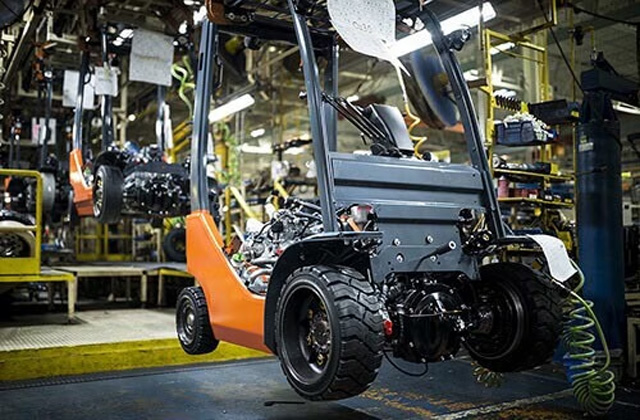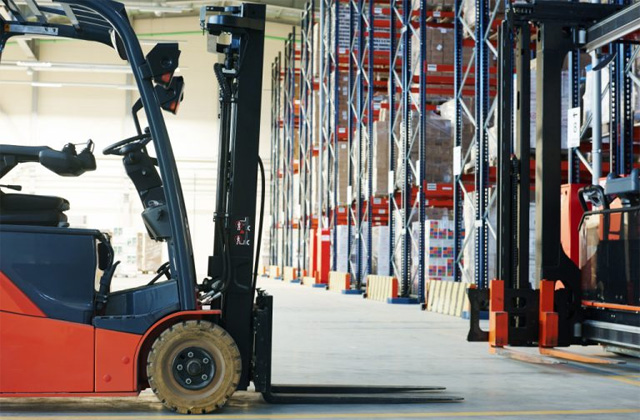In logistics warehousing, manufacturing, ports and even the construction industry, forklifts are no longer simple tools for "carrying heavy objects", but important intelligent nodes in the modern industrial system. Today, forklifts must not only be "liftable", but also "steady", "flexible" and "accurately controlled". The core source of these capabilities is the ever-changing forklift manufacturing technology and the high-precision manufacturers behind it.

1. From drawings to steel: The first step in forklift manufacturing is "concept"
The production of a forklift is never as simple as welding a piece of iron plate. It is first of all a scientific blueprint on a drawing.
1. Functional definition determines design ideas
The design of a forklift should clarify the model according to its purpose: is it an internal combustion forklift, an electric forklift, or a high-bay stacker? What is the load capacity? Is the usage scenario an indoor warehouse, an outdoor terminal or a special cold chain environment? This determines the choice of engine, battery, hydraulic system and tire.
2. Application of CAD and CAE systems in design
Modern forklift manufacturers generally use CAD 3D modeling and CAE simulation systems to perform force analysis, streamline design and center of gravity optimization on the whole vehicle. Especially for high-position forklifts or telescopic arm forklifts, stability and field of view are extremely important, and any error may cause rollover accidents.
3. Integration of environmental protection and ergonomics
With the rise of the green production trend, electric forklifts are becoming more and more popular. Battery layout, heat dissipation channels, and noise suppression must be considered in the design. The seat height, dashboard layout, and operating handle position of the cab are also directly related to the comfort and safety of the operator.
2. Revealing the core components: every component is related to performance
The performance of a forklift is not only about the appearance, its "muscle" and "nervous system" are the real core.
1. Power system: electric vs internal combustion
Internal combustion forklifts (diesel/gasoline/liquefied gas): suitable for outdoor use, powerful but high noise and emissions.
Electric forklift: suitable for indoor environment, clean and environmentally friendly, flexible to operate, battery technology (such as lithium battery vs lead acid) directly determines the working time.
2. Hydraulic system: the center of power
The hydraulic system is the core of the lifting and tilting action of the forklift, including hydraulic pumps, cylinders, distribution valves and other components. An efficient and stable hydraulic system can ensure smooth lifting when loaded and avoid fork arms sinking or shaking.
3. Drive and steering: flexibility is key
Differential drive, electronic steering system and multi-mode control are standard features of modern forklifts. Some models already support omnidirectional movement and can complete "side sliding" operations in narrow lanes, greatly improving space utilization.
3. Manufacturing process: a growth trajectory of forklifts from scratch
1. Material selection and cutting
High-strength steel is the main material, and laser cutting and CNC plasma cutting ensure the precise shape of parts. Under the trend of lightweighting, some manufacturers have begun to explore the application of aluminum alloy and carbon fiber materials.
2. Welding and frame forming
Automated welding robots have become mainstream, greatly improving welding strength and consistency. Some high-end manufacturers even use laser welding technology to improve the fatigue resistance of the connection parts.
3. Coating and anti-corrosion treatment
Surface treatment is related to the life of the whole vehicle. Electrophoretic coating + powder spraying process can make the frame have stronger anti-rust ability, especially suitable for humid or chemical environments.
4. Assembly and vehicle inspection
The assembly line integrates the frame, hydraulic system, electronic control system, battery, motor and other modules, and conducts a series of working condition inspections such as road testing, load testing, and control simulation.
4. Smart forklift: The future has come, and manufacturing transformation is in progress
1. Unmanned forklift: The integration trend of AGV and AMR
Smart forklifts use SLAM navigation and laser radar to identify the environment and complete the handling task autonomously. It is not only suitable for e-commerce warehouses and automated logistics centers, but also can realize unmanned factory operations at night.
2. IoT and remote control
The future forklift is no longer a "dumb device", but a "networked terminal" with sensors, which can upload operation data in real time to achieve early warning maintenance and efficiency analysis.
3. Digital twin and virtual commissioning
Under the background of "dual carbon", forklift manufacturers use digital twin technology to realize whole machine energy consumption simulation, virtual commissioning, assembly simulation, reduce trial and error costs, and improve production efficiency.
5. The significance of choosing a professional manufacturer: technology, service and growth are indispensable
Under the current global manufacturing pattern, choosing an excellent forklift manufacturer is not only about purchasing equipment, but also about laying the foundation for the company's future operating efficiency and expansion capabilities.
Recommended manufacturer: Shuangchao Machinery - China's forklift manufacturing strength
In the domestic forklift manufacturing industry, Shuangchao Machinery has established a complete forklift R&D, manufacturing and after-sales service system with more than 20 years of deep cultivation and accumulation. Its products cover multiple fields such as electric forklifts, heavy stackers, AGV unmanned forklifts, etc., with the following advantages:
Customized production capacity: special function modules can be customized according to the needs of different industries;
Intelligent technology integration: fully support remote monitoring, fault self-checking and automatic navigation;
Perfect after-sales service system: multiple service stations are set up across the country with fast response time;
Complete export certification: products meet European and American standards and are exported to many countries overseas.
Choosing Shuangchao Machinery not only means getting a high-performance forklift, but also means getting a trustworthy partner.
5. Industry pain points and future breakthroughs
1. Product homogeneity is serious, and innovation is the key to breaking the deadlock
Most of the mid- and low-end forklifts on the market have similar technologies, and price wars are frequent. How to achieve differentiation in terms of controllability, safety and intelligence is the way for manufacturers to survive.
2. Battery life bottleneck and environmental balance
With the popularization of lithium-ion forklifts, battery recycling and replacement costs have become a new focus. In the future, a win-win situation of long-term effectiveness + zero pollution may be achieved through solid-state batteries or hydrogen fuel technology.
3. Rising labor costs accelerate automation
As enterprises continue to expand their demand for "unattended" logistics scenarios, traditional forklift manufacturers must integrate robotics technology and AI dispatching systems to transform into comprehensive solution providers of "forklift + intelligent hub".
Forklifts, although small, carry the key lifeline of the modern logistics system. An excellent forklift manufacturer is more like a "brain behind the scenes", supporting the efficient operation of the global industry with materials, technology, design and services. In this industrial revolution led by intelligent manufacturing, Shuangchao Machinery is constantly promoting the evolution of forklifts from "tools" to "intelligent partners" with the concept of "technology as the basis and service as the core".

